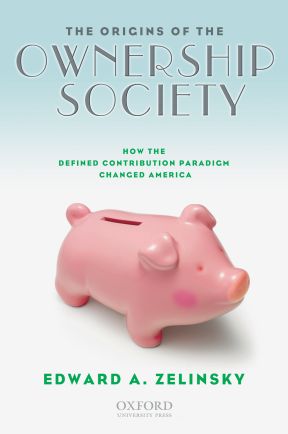By Edward Zelinsky
One widely-discussed possibility for reforming the federal income tax is limiting the deduction for charitable contributions. Whether or not Congress amends the Code to restrict the income tax deduction for charitable contributions, Congress should limit the charitable contribution deduction under the federal estate and gift taxes. Such a limit would balance the need for federal revenues with the desirability of encouraging charitable giving.
On December 11th, the advocacy group Responsible Wealth called for the federal government to tax estates over $4,000,000 at rates starting at 45%. Among those joining this call were heirs to old fortunes such as Abigail Disney and Richard Rockefeller and owners of new wealth such as Bill Gates, Sr. Most notably, Warren Buffett agreed (as he has in the past) with this recent plea for higher estate taxes.
I am a fan of my fellow Nebraskan and agree with him that the federal government should impose estate taxes, particularly on large fortunes. I also admire Mr. Buffett for the Giving Pledge which he has promoted with the younger Mr. Gates. Under that Pledge, wealthy individuals commit to giving at least half of their wealth to philanthropy.
There is, however, considerable tension between the Buffett commitment to federal estate taxation and the Buffett commitment to philanthropy. By virtue of the estate tax charitable deduction, when a wealthy decedent leaves part or all of his estate to charity, no estate tax is paid on these contributed amounts.
It is perfectly plausible to call for estate taxation only for those who don’t distribute their wealth to philanthropy. It is, however, hard to reconcile that position with Responsible Wealth’s advocacy of strong estate taxation. Mr. Gates, Sr., for example, declared that “it would be shameful to leave potential revenue on the table from those most able to pay.” However, that is precisely what happens when large estates go to charity, namely, estate tax revenue which would otherwise flow to the federal government is instead diverted to charity. Such charity may be worthwhile but it does nothing to reduce the federal deficit.
Similarly, Ms. Disney argued that “a weak estate tax” falls “on the backs of the middle class,” presumably because the federal government will respond to reduced estate tax revenues by deficit financing, by raising other taxes on the middle class or by reducing government spending. However, when an estate is distributed to charity free of estate taxation, the government confronts these same choices.

A compromise could preserve the incentive for charitable giving while also generating some estate tax revenues for the federal government: Limit the estate (and gift) tax charitable deduction.
Many, including President Obama, have suggested such limitations on the income tax charitable deduction. If, for example, an individual is in the 35% federal income tax bracket, the President has proposed that the donor receive a deduction as if he or she were in the 28% bracket. In a similar fashion, the estate tax charitable deduction could be curbed, thereby generating some additional revenues for the federal fisc while also keeping a tax-incentive for charitable giving.
Consider, for example, a billionaire who leaves his entire estate of $1,000,000,000 to charity. To simplify the math, let’s assume that this billionaire would pay estate tax at the 40% rate if he did not bequeath all his assets to philanthropy. Because this $1,000,000,000 bequest is fully deductible for federal estate tax purposes, no tax is paid in this example. If this billionaire had not made this charitable bequest but had instead left his money to his children, the federal government would have received estate tax revenues of $400,000,000.
Suppose now that Congress limits the federal estate tax deduction to 70% of the amount donated to charity. In this case, the billionaire would leave a taxable estate of $300,000,000. At a 40% rate, this would require a federal estate tax payment of $120,000,000.
To provide the cash to pay this tax, this billionaire would probably reduce his charitable bequest to retain cash to pay this estate tax. However, at the end of the day, charity would receive the bulk of this billionaire’s assets while the federal government would receive some estate tax.
A limit on the estate tax charitable deduction could be constructed to fall only on relatively larger estates. For example, the first $10 million of charitable bequests could be fully deductible for estate tax purposes and only the amount gifted over that threshold would be deductible in part.
Alternatively, the limit could be phased in as charitable contributions increase. For example, the first $10 million of charitable bequests could be fully deductible for estate tax purposes. Then the next $50 million of philanthropic gifts could be 90% deductible and any further gifts would be 70% deductible for federal estate tax purposes.
The details are less important than the basic policy: By limiting the estate tax charitable deduction, all large estates donated to philanthropy would pay some federal estate tax revenues at a reduced rate. This would balance the need for federal revenues with the encouragement of the kind of charitable bequests quite commendably encouraged by Mr. Buffett and the Giving Pledge.
Edward A. Zelinsky is the Morris and Annie Trachman Professor of Law at the Benjamin N. Cardozo School of Law of Yeshiva University. He is the author of The Origins of the Ownership Society: How The Defined Contribution Paradigm Changed America. His monthly column appears here.
Subscribe to the OUPblog via email or RSS.
Subscribe to only business and economics articles on OUPblog via email or RSS.
Image credit: Macro shot of the seal of the United States on the US one dollar bill. Photo by briancweed, iStockphoto.
The post Limit the estate tax charitable deduction appeared first on OUPblog.




